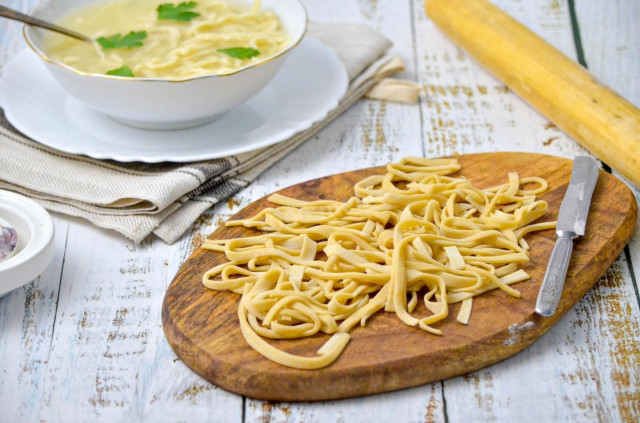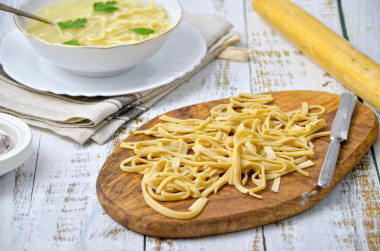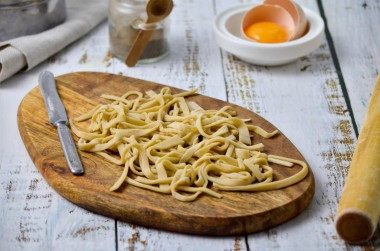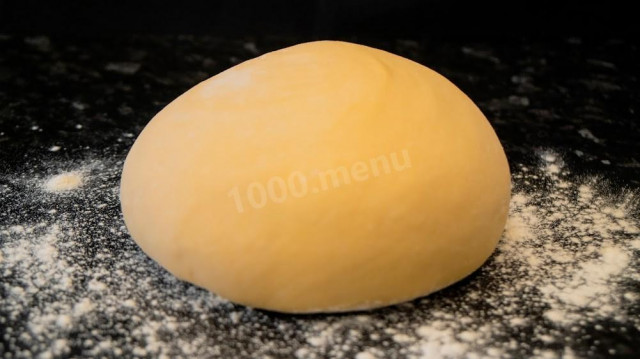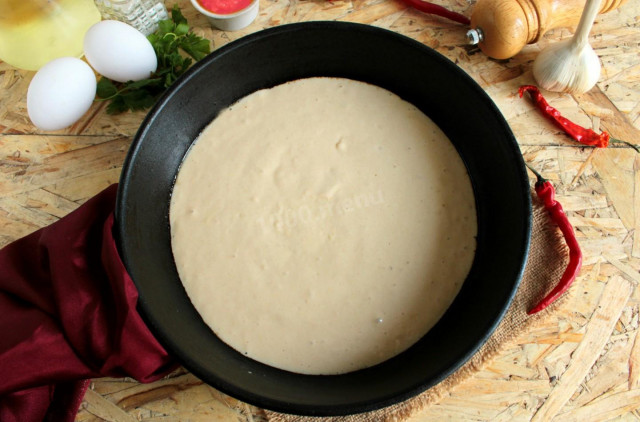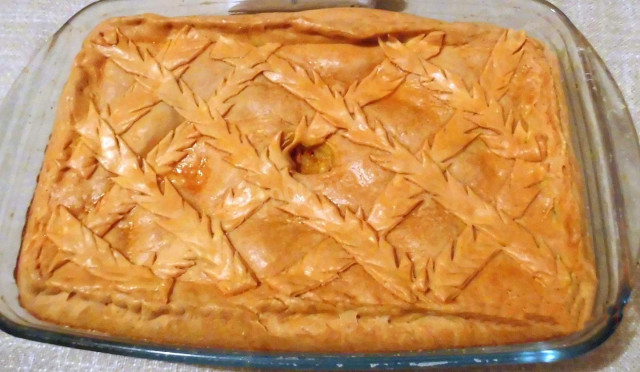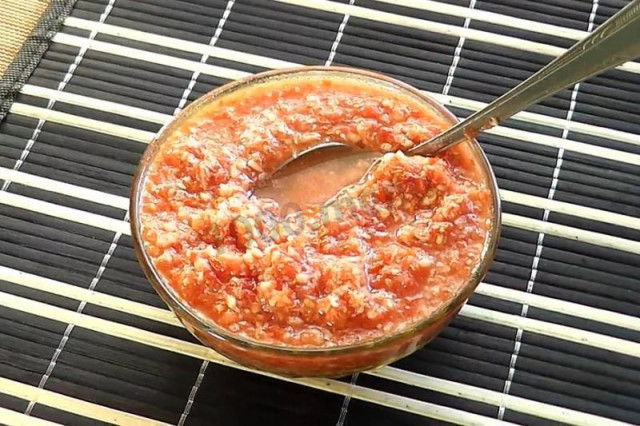Composition / ingredients
Step-by-step cooking
Step 1:
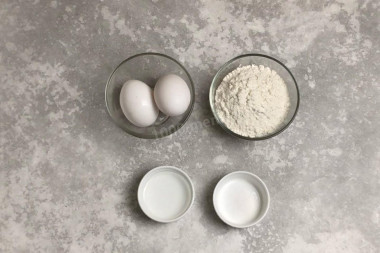
How to make homemade noodles on eggs for chicken soup? Prepare and measure the products. The number of ingredients is indicated based on one egg, but I do for two. You can not add water, it depends on the size of the eggs and the type of flour. If you see that the dough turns out to be steep, then add a little water. And vice versa: pour flour into the batter. Do not overdo it with water, the dough should not be soft.
Step 2:

You can knead the dough in different ways. Or on the table, or in a bowl, if you do it manually. Or with the help of technology, but this is not in this recipe. I'm used to starting in a bowl, and then moving on to the table. Salt the flour first. Then make a funnel in it and drive an egg into it. Then, using a fork or with your hands, start mixing the egg into the flour. And you can add a little water, look at the consistency of the dough.
Step 3:

Knead the dough in a bowl until all the flour is soaked from the egg.
Step 4:
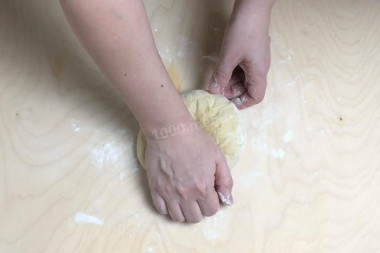
Transfer the dough to the work surface of the table, sprinkled with flour, and start actively kneading it. Add flour from time to time so that the dough eventually becomes smooth and not sticky. It takes a long time to knead, this process requires strength and endurance.
Step 5:

Put the finished dough ball back into the bowl, cover with a towel and leave for 30-40 minutes to rest. You can wrap the dough in plastic wrap, but only if it does not stick exactly, otherwise you will be tormented to tear it off.
Step 6:
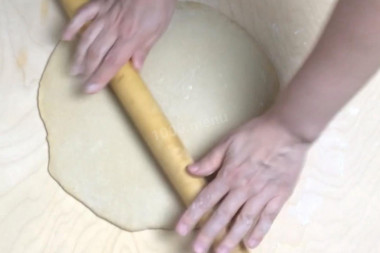
After resting, roll out the dough into a layer using a rolling pin. The right dough should be elastic, not sticky, a little tight. The rolling process will require strength. The thickness of the layer is about 1 mm, the thinner the dough, the tastier the noodles. Leave the finished layer for 20 minutes so that it dries a little. It will be easier to cut noodles this way.
Step 7:
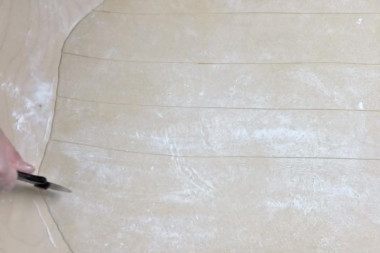
Slice noodles of any shape. I make a short one, so I cut the layer into strips. It is convenient to do this with a pizza knife. If you like long noodles, then roll the layer into a roll and cut it already. For beshbarmak, cut into squares.
Step 8:

Fold the dough layers one on top of the other and start slicing strips of noodles. Adjust the thickness to taste, just remember that when cooking noodles will increase slightly in size. Shake the chopped noodles a little in the air with your hands to avoid sticking together and shake off excess flour. Homemade noodles are ready, you can fill the soup with it. Bon appetit!
The noodles turned out to be tender, soft, but at the same time they did not boil in the soup.
The dough had to be made twice. At first I poured too much water, it became soft and stuck together when slicing. The second time I kneaded a tight dough, and everything turned out.
The finished noodles can be dried and stored for up to two months in a closed container.
Be prepared for the fact that flour may need more or less than indicated in the recipe. Focus not on the amount of flour, but on the desired consistency of the dough. To avoid mistakes, read about flour and its properties!
Be sure to wash eggs before use, as even seemingly clean shells may contain harmful bacteria. It is best to use food detergents and a brush.
For cooking, it is better to use filtered or bottled water that is neutral to taste. If you use tap water, keep in mind that it can give the dish an unpleasant characteristic taste.
Caloric content of the products possible in the composition of the dish
- Chicken egg - 157 kcal/100g
- Egg white - 45 kcal/100g
- Egg powder - 542 kcal/100g
- Egg yolk - 352 kcal/100g
- Ostrich egg - 118 kcal/100g
- Whole durum wheat flour fortified - 333 kcal/100g
- Whole durum wheat flour universal - 364 kcal/100g
- Flour krupchatka - 348 kcal/100g
- Flour - 325 kcal/100g
- Salt - 0 kcal/100g
- Water - 0 kcal/100g

